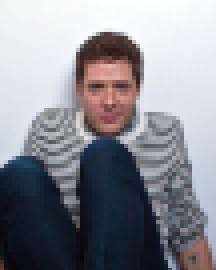The gravity-defying choreography in OK Go’s music videos is out of this world—which is also where the American rock band wants to send students’ art experiments.
In collaboration with the Playful Learning Lab, a maker-education research lab at the University of St. Thomas, the band is inviting students ages 11 to 18 to propose ideas for experiments that will be launched into space. Dubbed “Art in Space,” the competition’s organizers want kids to come up with creative experiments that combine arts and sciences to launch into suborbit.
Shuttling the projects beyond the atmosphere will be the New Shepard spacecraft, built by Blue Origin, Jeff Bezos’s space company. Afterward, the winning teams will receive payload data, along with videos and photographs from the flight.

The idea may sound over the top. But it shouldn’t come as a surprise to those who have watched OK Go’s music videos, which resemble more creative science experiments than what one usually finds on MTV or VH1. The theatrics range from explosions involving acoustic guitars and paint-filled balloons balloons in zero gravity, to a Rube Goldberg machine that runs for nearly 4 minutes and includes a crashing piano.
OK Go’s tunes are catchy enough to attract a following. But the videos have also proven immensely popular among educators, and “get used in a lot of classrooms because they’re a joyful, fun, exuberant look at some very basic physics” and science, says Damian Kulash, OK Go’s lead singer.
Since forming in 1998, the band has received a steady stream of emails, physical letters and even VHS tapes over the years from a variety of teachers—from preK to graduate school, homeschoolers and even government flight instructors—saying they found inspiration for educational activities from its music videos. But it wasn’t until six years ago when they had a “light-switch moment” about doing something more formal and focused to help their educator following, according to Kulash.
But life as a Grammy-winning rock band, it turns out, is time consuming. “The idea that we could do great education with [our videos] was sort of like a dim glimmer in the back of minds,” Kulash says. Yet “it wasn’t something we could really do anything about because we already have a full-time job.”
That all changed when the band performed at the 2017 TED Conference. There, Kulash met AnnMarie Thomas, founder of the Playful Learning Lab, and expressed interest in helping the band adapt its videos into classroom lesson materials. “It was a perfect meeting of minds because they’re very much about the type of joy, wonder and creativity that we are in pursuit of,” says Kulash.
That meeting led to the creation of the OK Go Sandbox, a collaboration between the band and the University of St. Thomas’ engineering experts and educators to offer free lesson plans, projects and videos that explain the scientific and mathematical concepts involved in the shooting of the band’s videos. (There are also outtakes and blooper clips when those numbers didn’t add up.)
Since its launch in August 2018, the site has been visited 640,000 times. Here’s an example of what you can find: The music video for “The One Moment” was filmed in 4.2 seconds in real-time but is played back in slow motion, stretching to 4 minutes. A dizzying array of colors, explosions and even a flipbook are timed with the beat of the song. On the Sandbox website, Kulash explains a spreadsheet and the algebra involved to figure out how to capture the shots in slow motion, all while keeping time.
“It’s nice as an educator to have free resources that I know are developed by educators,” says Caroline Little, who teaches French and engineering at St. Thomas Academy in Minnesota and has been using OK Go videos to teach lessons on gravity and physics wedges. “The best thing about the Sandbox,” she adds, “is watching the students’ faces light up when they see all the things you’ve been teaching about happen in a music video.”
OK Go’s “Art in Space” challenge was partly inspired by the band’s own zero-gravity experience in filming one of its videos, says Kulash. But the idea is not the first of its kind. Other educational organizations, including Ardusat and the Quest Institute, have also launched students’ science projects into space.
Kulash, who will evaluate submissions alongside fellow band members, aerospace experts and engineers from the Playful Learning Lab, are looking for experiment ideas that employ a diverse range of skill sets and subject areas. Just as the the band’s music videos turn science into art, and vice versa, so too will they be looking for creative, cross-disciplinary proposals.
Here are the rules: Teams must include three or more students, along with an adult mentor. Submissions must also include a 500-word essay explaining the design and feasibility of the proposed experiment, along with pictures or videos. Applications are due on May 6, 2019 at 11:59 p.m. CST, and two winners will be announced in June. They will then work with the OK Go Sandbox engineers to create the project, which will be delivered as a payload sometime in 2020.
When asked for any tips for prospective submissions, Kulash only had this advice to offer to students: “Lean into your curiosity. Curiosity, as an engine for discovery and creativity is infinite, and the boundaries of that canvas are not defined by something that is written in your textbook.”


